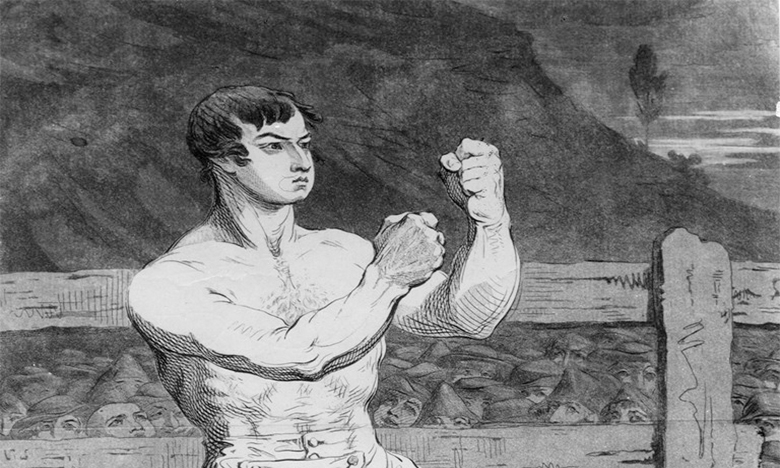With a fist flying toward his face, the fighter raises his left forearm to block, swivels to his right and strikes back, throwing his right fist upward and sending his opponent to the ground. For the first time in a boxing ring, a fighter was successfully using what would later be called an uppercut. Back then, it was simply called “the Mendoza.”
Long before the likes of Muhammad Ali, Sugar Ray Robinson or Joe Louis, Daniel Mendoza came out swinging, elevating London’s 18th-century street fighting into a science. He ducked fists, faced anti-Semitism and overcame his small stature to rise to the top, and his fine-tuned boxing techniques are still with us today.
Born in London’s East End in July 1764, Mendoza started his pugilistic career when bigger meant better. Boxing was little more than two men standing in front of each other, throwing haymakers until the other went down, and stayed down. It was appreciated more as an opportunity to gamble than as a sport, which explains why it grew in popularity alongside bearbaiting and cockfighting.
After all, fighters did go at it like animals back then. These brutal — and notably illegal — encounters saw eyes gouged, stones thrown at heads and plenty of kicking and biting. But Mendoza helped knock all that out, ushering in a new era of rules, patrons and skills to launch the first golden age of mega fights and superstars.
When paying homage to boxing pioneers, Jack Broughton’s name often arises. In 1743, the English bare-knuckle fighter codified a set of rules that became known as the London Prize Ring Rules, bringing consistency and select regulations to the ring. “Prior to the London Prize Ring Rules, you could more or less do anything,” says boxing historian Miles Templeton.
But Broughton’s influence pales when compared with Mendoza’s, according to Pierce Egan, the so-called “Plutarch of the ring” and author of Boxiana. “No pugilist whatever, since the time of Broughton (or even Broughton himself), has ever so completely elucidated, or promulgated, the principles of boxing as Daniel Mendoza,” he wrote.

